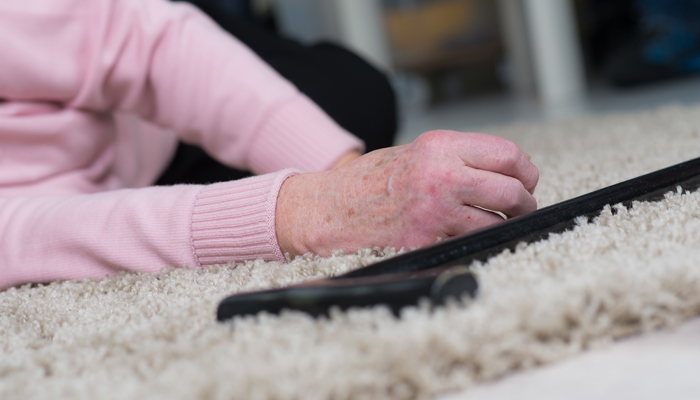
Has your mother fallen recently? She’s not alone! One out of four adults 65 and over experiences a fall each year. That makes falls the leading cause of injury for older adults.
Falls are serious business. A few grim statistics: In the U.S. an older adult dies once every 20 minutes as a result of a fall. Disabilities from a fall include injuries that can be life changing: a traumatic brain injury or broken hip. Especially for seniors, falls pose a danger to an independent lifestyle. They often usher in a permanent need for daily assistance.
Who is at risk for falling?
Has Mom or Dad fallen twice in the past year? Have you noticed balance or gait problems? Has there recently been a severe fall? These are signs of “high risk.” Other signs involve poor vision, or taking medicines that list dizziness as a side effect.
A fall risk assessment
To be safe, ask your relative’s doctor to do a fall risk assessment. This includes a review of
- underlying medical conditions. Many chronic diseases affect and the ability to get around.
- the home environment. The doctor can write an order for an occupational therapist or other trained professional to do a home assessment. They can identify simple ways to remove hazards and make the home safer.
- medication use. Some types of drugs, or daily use of four or more prescription drugs, increase the risk for falling.
Preventing falls
A recent review of numerous studies show that some strategies are better than others. The most effective measures for preventing a fall include:
- Exercise, especially activities that promote balance.
- Getting regular eye exams and following through with corrective procedures.
- Removing hazards around the house.
- Wearing sturdy shoes and slippers. A firm sole is better than a soft cushy one because it’s easier to feel the ground below.

